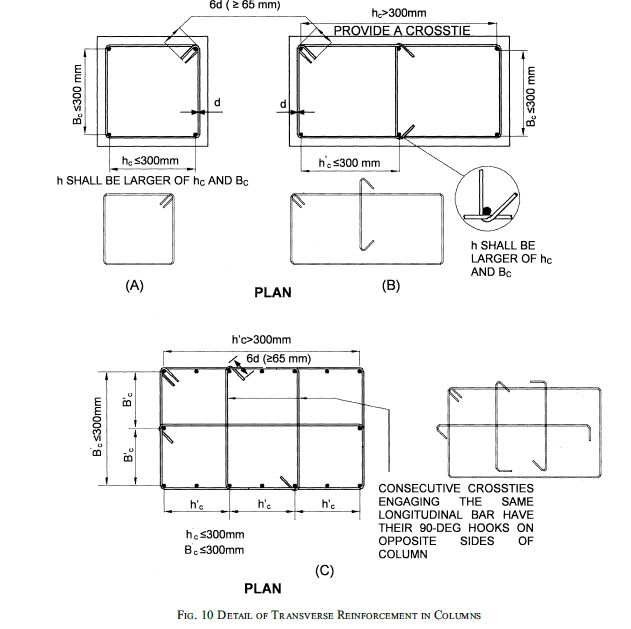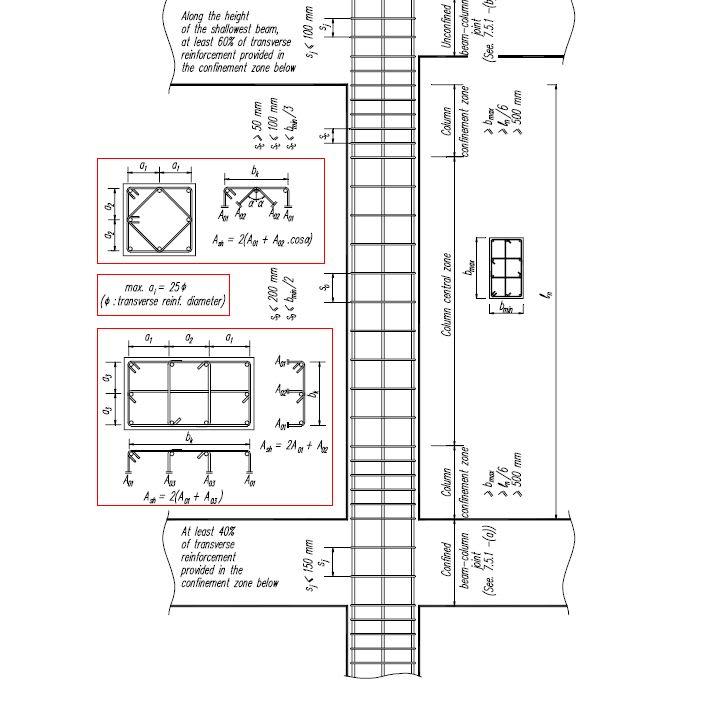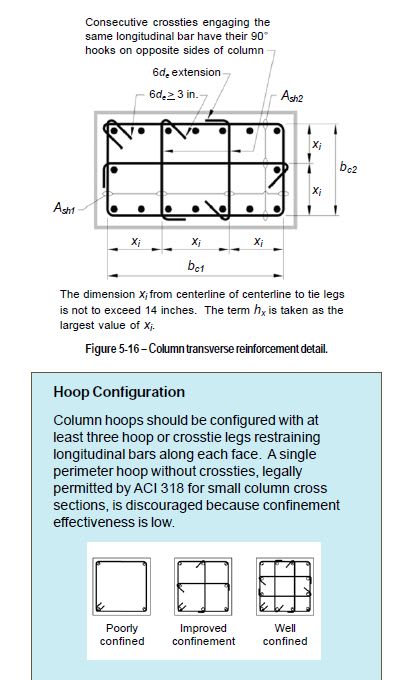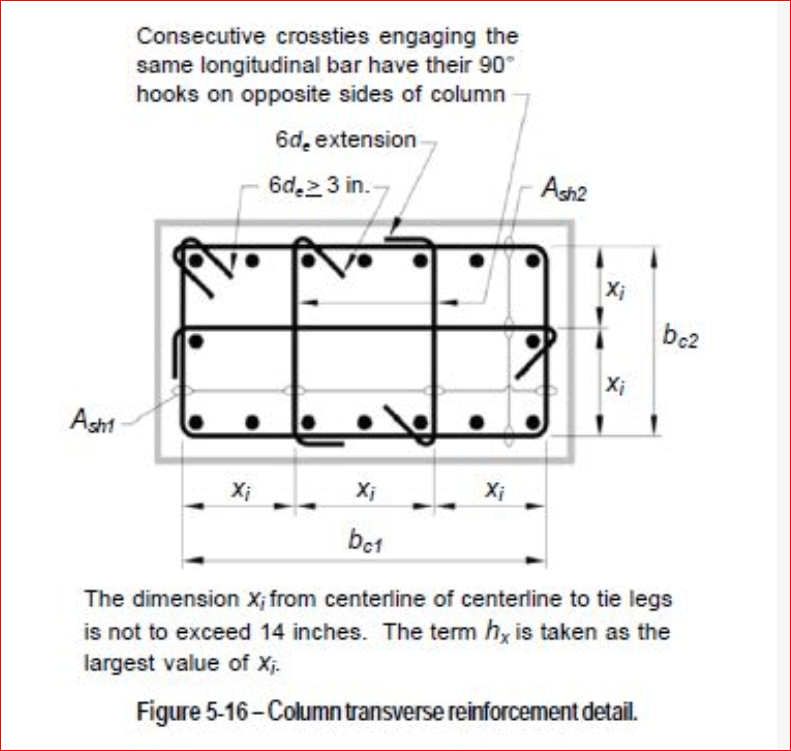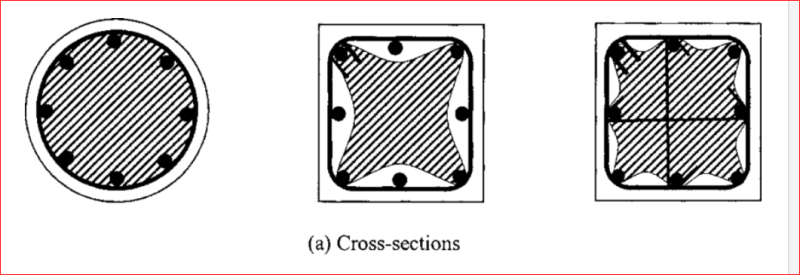Edit: By the way, vertical bars do not provide confinement to the inner core of concrete. In fact, they need confinement themselves, which is provided by the ties.
Yeah I meant if you had an intermediate bar it would obviously require a tie and therefore would be a better confined section overall. Wasn't implying simply adding longitudinal bars enhanced the confinement.
How come ACI CL18.7.5.2 isn't applying here? Seems to make it pretty clear that you could be down to 8" spacing required for longitudinal bars when you're dealing with higher loaded columns (P
u>0.3A
gf'
c), or have higher strength concretes. Otherwise you're required to comply with the 14" [350mm] limit which a single bar in the corners would not comply with in a 24" [610mm] column. Not up to the play with all these SDC's though so maybe this does not apply. But this clause would be what I would expect to see based on NZ code (given it is based on ACI in the deep dark past).
Curious, how are you detailing these 'pins' in the columns that you refer to? Or is it you deciding they are a 'pin' vs it really not being a 'pin'?
Concrete is very rarely exhibits pin like behaviour in typical continuous construction, it's a fantasy to assume otherwise if it's built in a monolithic manner. Secondary structure like this still has to go along for the ride, and be detailed appropriately to the seismic provisions, it's just you might not be strictly reliant on it as part of the lateral resisting system.
We saw two collapses and significant loss of life in NZ in 2011 due to designers through the 1982-1995 period historically being able to treating the gravity system as a secondary system that did not require the same level of detailing as the actual lateral system, nor consideration of the compatibility in terms of deformations. Think in one structure that suffered total collapse with the largest loss of life (115 people) it had 400 diameter columns with 6x20 diameter bars with close to 50 cover with R6 [6mm] spiral at 250 ctrs. That type of detail does not stand a chance when subjected to inelastic demands (but at the time of the original design it was compliant with code due to some bright spark succeeding in substantially relaxing the rules for about 13 years). We spent the next decade after this code change was reverted back ignoring the problem that we created (she'll be right), and the next decade attempting to strengthen this building stock in an effort to reduce the risk of collapse due to this non-ductile column issue (she wasn't alright).
Remember codes are a minimum requirement, they have been wrong from time to time. I reiterate 4 bars in the corner of a column that size subject to seismic loads is an awful detail even if it is allowed by a code. You're allowed to educate yourself and use judgement to go beyond the minimum where best practice dictates otherwise.
FYI, we've required at least 8 minimum bars in a rectangular column since the 1970's when our codes embraced the capacity design philosophy, this requirement in our latest concrete code can be relaxed for low loads <10% of A
gf'
c and/or when the resulting bar spacing after reducing the number of bars spacing is still <150mm. So basically it really only practically applies to smaller columns in practice.

